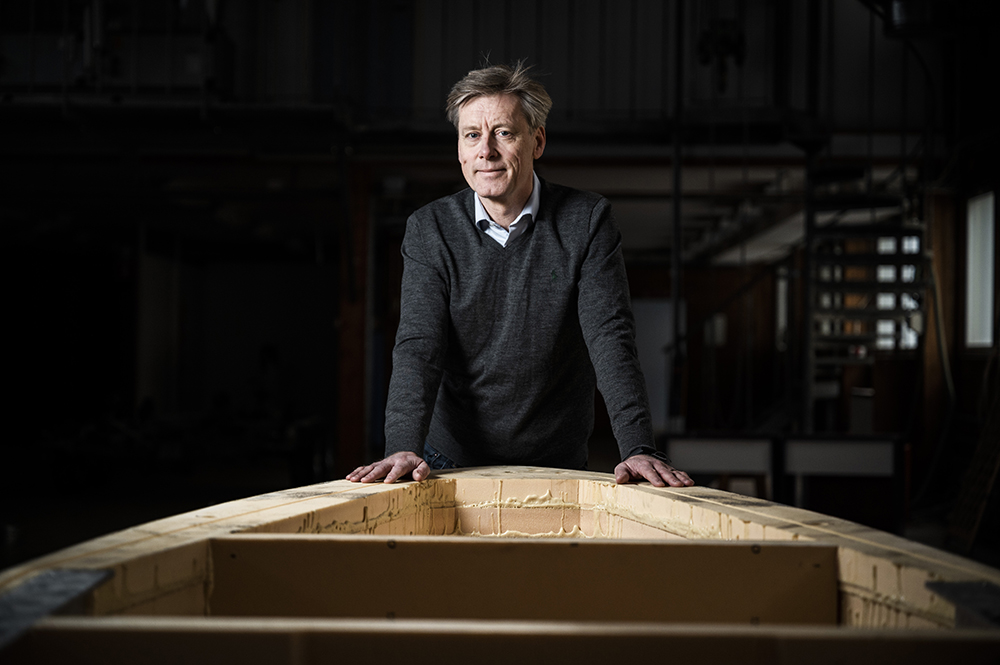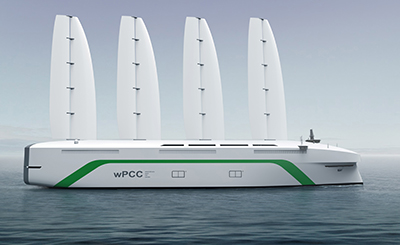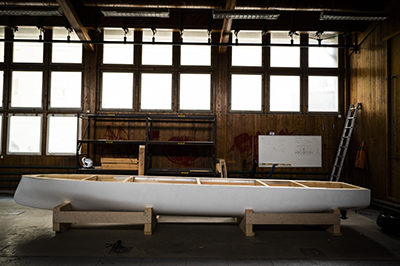
Wind in the sails of emission free shipping
Engine powered shipping took over transport across the world’s oceans over one hundred years ago. Sailing ships can now be on the way back. KTH is developing wind-powered ocean going merchant ships of the future – almost entirely emission free.
The shipping industry, which handles around 90 percent of world freight today, accounts for two percent of global carbon dioxide emissions. According to the UN International Maritime Organization (IMO), the goal is for maritime transport to halve its emissions by the year 2050.
“We are going much further and aiming for a reduction of 80-90 percent,” says Jakob Kuttenkeuler , a Professor at the KTH Centre of Naval Architecture.
Together with the Wallenius shipping line and maritime solution consultants SSPA, KTH is developing a car transporter with a 6,000 vehicle capacity that should be able to be wind-powered. The vessel will have several sails, in the form of vertical wings of metal or composite material.

There are around 450 large car transporters today that ship cars between continents. Each of these uses 40 tons of fossil fuel per day. This is the traffic that the new wind-powered vessels are designed to replace.
“This entails a paradigm shift as today’s ships travel far too fast and with high fuel consumption. We are developing the world’s first emission free shipping concept in modern times,” Kuttenkeuler says.
Efficient sailing
The project faces numerous technical challenges The sails, or rigging, will be about 100 metres high, twice as high as the biggest existing sailing ships. Performance, safety and reliability are being tested by computer simulation to enable the most efficient sailing possible.
“It’s a mix of aero and marine engineering. The rigging should be aerodynamically optimised, robust, light and cheap to manufacture. It can be likened to designing sailing mechanics for an aeroplane that is going to be tossed about at sea,” Kuttenkeuler says.
The vessels will not travel as fast as today’s car transporters. Instead of taking seven or eight days to cross the Atlantic, the wind-powered vessels are expected to need up to twelve days.
The researchers are investing a great deal of time in simulating and calculating the best possible ocean routes with regard to angle to the wind, wind strength and weather forecasts. Pioneering projects always required extra caution and precision when it comes to calculations – there is virtually no documentation, statistics or proven technology to fall back on.

“For example, it is difficult to know what the atmosphere will be like at 50 to 100 meters above sea level. There has never been any need to document wind speeds or direction in the layers of air,” he says.
Maiden voyage
A model ship is also being built in the department lab, with a 7 metre long hull that is going to be fitted with a deck, rigging and masts. It is due to make its maiden voyage in the Stockholm archipelago this autumn. The boat is self-driving and will be monitored by students and researchers in a support boat.
Although the project involves major engineering challenges, the biggest challenge perhaps is to gain acceptance from potential customers, shipping lines and freight buyers. The Wallenius vision is for its ships to be able to sail totally emission free in the future.
“The hope is that customers will be willing to transport products in a way that offers major environment gains at the cost of slightly longer voyage times,” says Kuttenkeuler.
Text: Christer Gummeson
